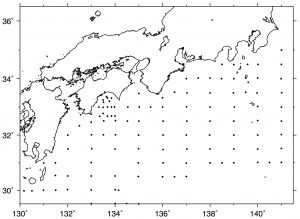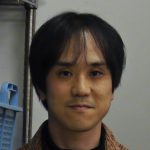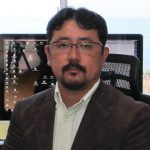Kiyotaka Hidaka
Influence of ocean mixing on copepod distribution and reproduction around the Kuroshio
Research summary
In the marine ecosystem, species composition and abundance has shown decadal change and species alternations, or fish regime shifts, in world oceans are recognized as among their consequences. Fluctuations in oceanic mixing process and nutrient supply to surface might have brought about the change, but the information on historical change of ecosystem correspond to those fluctuations are still scarce.
Zooplankton is secondary producer in the pelagic ecosystem, which is also important as food for commercial fishes. The zooplankton samples are not space consuming, maintained in formalin-sea water solution, and thus historical samples (> ~1960s) are available in some research institutes.
In this study, we will examine the mechanism through which oceanic mixing process effect zooplankton production around the Kuroshio.
In this study, we will study effects of oceanic mixing process on zooplankton production around the Kuroshio, based on samples and data stocked in the National Research Institute of Fisheries Science and its associated research institutions. The main material will be long-term zooplankton samples with wide geographical range. They have been collected as monitoring of fish eggs and available for zooplankton study after counting eggs of major commercial fishes. Some part of the samples has already been analyzed for wet weight and copepod biomass and we will detect the influence of oceanic mixing based on them. Our plan also includes gonad analysis of copepods in the samples for the estimation of the egg production rate. With egg production rate, we will achieve deeper understanding of the zooplankton process around the Kuroshio and effect of oceanic mixing among them.
Principal Investigator:
Kiyotaka Hidaka
Senior Researcher, Monitoring Group, Research Center for Fisheries Oceanography and Marine Ecosystem, National Research Institute of Fisheries Science, Japan Fisheries Research and Education Agency, Marine Biology
http://nrifs.fra.affrc.go.jp/ResearchCenter/3_FOME/index.html
Collaborator:
Shinji Shimode
Associate Professor, Manazuru Marine Center, Yokohama National University, Marine Biology
http://www.mmcer.ynu.ac.jp/shimo/my_site/Welcome.html





